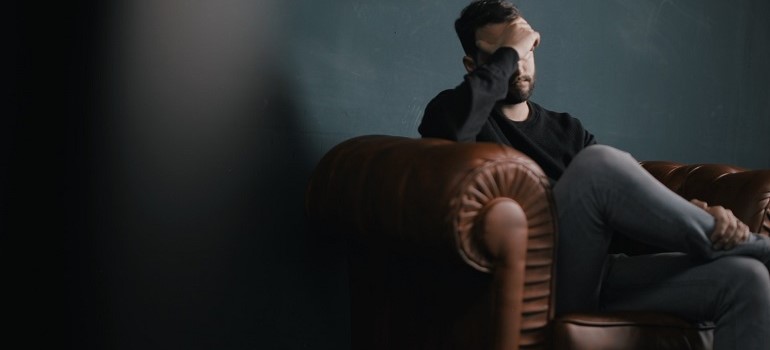New Jersey Substance Abuse Statistics
Welcome to a deep dive into the world of substance abuse in the great state of New Jersey. Join us in this eye-opening journey, unearthing the latest statistics, trends, and initiatives in the fight against this pervasive issue. Understanding the New Jersey substance abuse statistics and their implications is crucial in addressing the challenges of individuals with addiction. At our drug rehab Princeton NJ, we track our patient’s progress even after they leave rehab to support their journey. We are invested in the progress of all of our clients, and we love celebrating their victories. Moreover, by looking at how the opioid epidemic is evolving we can gain valuable insights and offer better treatment solutions.
Jump to Section
Understanding New Jersey Substance Abuse Statistics
Let’s start by getting a clear picture of the substance abuse situation in the Garden State. We’ve previously covered the statistics and trends for substance abuse and addiction in Pennsylvania, and now we’ll look at NJ. New Jersey substance abuse statistics paint a sobering reality. The rates of substance abuse mirror the national average but bring the issue closer to home. Although New Jersey isn’t leading in national statistics, being on par with the average seems equally horrible. Drug and alcohol abuse are widespread, and the opioid epidemic only seems to be gaining speed. It’s important to note that these statistics provide a snapshot of the problem. They help us identify who is most affected and the underlying factors contributing to substance abuse.

Demographic Factors
To fully comprehend the scope of the issue, we must consider the various demographic factors at play. Substance abuse does not discriminate, affecting individuals of all ages, genders, and socioeconomic backgrounds. The New Jersey substance abuse statistics reveal a concerning trend, with certain groups being more susceptible to addiction. Exploring age, gender, and socioeconomic disparities gives us a deeper understanding of the underlying challenges faced by these communities. Based on these numbers we will continue to expand our services in order to offer help to more affected individuals.
If we examine treatment center statistics, we gain the following insights:
Racial or ethnic statistics:
- White (non-Hispanic) – 60%
- Black (non-Hispanic) – 24%
- Hispanic origin – 15%
- Other – 2%
Employment information:
- Unemployed – 20%
- Student – 1%
- Not in Labor Force – 48%
- Employed Full/Part Time – 31%
Living Arrangement:
- Homeless – 10%
- Dependent Living/Supervised Living – 12%
- Independent Living – 79%
Types of Substances
When it comes to the substances plaguing the state, New Jersey substance abuse statistics show a variety of culprits. From opioids to designer drugs, the landscape of substance abuse is constantly evolving. Sadly, heroin addiction seems to be prevalent in NJ, with stats higher than national averages. For this reason, we have developed a heroin addiction treatment program to address the needs of affected individuals. Understanding the specific substances being abused allows us to tailor prevention and treatment efforts, ensuring we tackle the problem effectively.
When looking at the use rates for drugs and alcohol in New Jersey, we have a few standouts.
- Cigarette use (1%) for youth ages 12-17 is lower than the national average (2.7%) and is showing signs of decline.
- Marijuana is also lower than the national average of 12,5% compared to 16,2%.
- Heroin (0,56%) and opioid (0.9%) use both exceed national averages (respectively 0.30% and 0.7%).

Statistical Data and Trends
Now, let’s delve into the cold, hard numbers that shed light on the state of substance abuse in New Jersey. The statistics provide valuable insights into treatment and rehabilitation efforts, and the prevalence of co-occurring disorders.
In 2021 there have been 87.745 rehab admissions in NJ, of which 47.538 were unique patients. When compared to the same statistics for 2010 (72.922 and 52.499, respectively), we can an interesting trend. There is a larger number of overall admissions; however, it is for a smaller number of unique patients. If we examine age groups seeking treatment, there is a noticeable decline in those aged 18 and under and those in the 18-24 bracket (533 and 7.022). On the other hand, there is an increase in those aged 25-59 and 60 and over (74.684 and 5.415).
Treatment and Rehabilitation
According to New Jersey substance abuse statistics, a significant number of individuals are seeking treatment for substance abuse. Understanding the available treatment programs and their effectiveness is crucial in helping those battling addiction find their path to recovery. For example, we love getting feedback from alumni from our alcohol rehab Edison NJ programs to improve the patient experience. Exploring the various approaches and therapies provides hope for a brighter future.
Based on nationwide rehab center admission rates the leading substances people sought treatment for are:
- Heroin – 38%
- Alcohol – 36%
- Other opiates – 7%
- Marijuana – 7%
- Cocaine – 5%
- Methamphetamines – 1%
When we look at client goals during treatment, we see another disturbing trend. Only 50% of patients in NJ who were treated managed to resolve their alcohol or drug problem. Of all patients treated in 2021, 56% saw an improvement to their physical health, while 45% improved their mental well-being. These numbers indicate the importance of choosing a treatment center with a reputation for good success rates and positive outcomes. However, the effectiveness of treatment will also depend on many factors, such as the individual’s commitment toward recovery.

Overdose Rates
Tragically, overdose rates in New Jersey have seen a distressing increase in recent years. The statistics reveal the devastating toll substance abuse takes on lives. By examining the leading causes and contributing factors behind overdose deaths, we can work towards implementing targeted strategies to prevent these avoidable tragedies.
Over the last several years, overdose rates have been steadily increasing. Opioid overdoses are the leading factor in drug overdose deaths. Many are blaming the prescription drug epidemic for the increase in opioid overdoses. Thankfully, there are solutions for those who are struggling with prescription medication substance use disorder. Contact our prescription drug addiction rehab treatment center for information on how we can help you overcome your addiction.
In 2000, opioid overdoses represented 48% of all drug-related deaths, and in 2021 they climbed to 75%. When it comes to total overdose rates, in 2015 they were at 16.7 per 100.000, while in 2020 they reached 32.0 per 100.000. As the opioid epidemic surged, we saw several weeks in 2022 that had over 75 deaths.
Co-occurring Disorders
A complex relationship exists between substance abuse and mental health issues. A co-occurring mental disorder was present in 60% of all treated patients. Many of these disorders were only diagnosed upon patient arrival and examination. The statistics highlight the prevalence of co-occurring disorders, emphasizing the need for integrated treatment that addresses addiction and mental health. By recognizing this connection, we can ensure individuals receive the comprehensive care they need to reclaim their lives.

Initiatives and Policies
New Jersey is taking proactive steps to combat substance abuse through a range of initiatives and policies. Prevention efforts aim to educate communities and empower individuals to make healthier choices. Increasing accessibility to treatment centers and facilities is another key focus, along with legislative actions enforcing stricter regulations and penalties.
Governor Phil Murphy has taken several steps to address New Jersey substance abuse statistics and the opioid crisis. By signing three new bills, barriers to accessing crucial harm reduction services and supplies are being removed. These initiatives come at a critical time when the state witnessed a staggering number of drug overdose deaths in 2021. Furthermore, these bills build upon previous attempts to provide essential services. These services include clean syringes, HIV and hepatitis prevention, health screenings, and support for treatment, vaccination, education, and recovery.
Hopefully, the expansion of harm reduction centers will create a compassionate and inclusive environment. This environment of support and understanding can ensure individuals who use drugs have access to the necessary care they deserve. Additionally, the legislation establishes multidisciplinary local overdose fatality review teams. These teams can research fatal drug overdoses and identify opportunities for future interventions to prevent these tragedies.
Resources and Support
No one should face substance abuse alone, which is why New Jersey offers a plethora of resources and support systems. Helplines and hotlines provide a lifeline to those in need, offering assistance and guidance. Support groups and recovery programs foster a sense of community and serve as pillars of strength throughout the recovery journey.
Covering the Cost of Rehab
When seeking treatment for substance abuse, many individuals are reluctant to get treatment due to the associated costs. Thankfully, utilizing health insurance can be a vital resource to help cover rehab costs. Many health insurance plans offer coverage for addiction treatment, including inpatient and outpatient programs, therapy sessions, medications, and other services. For example, a large number of our patients rely on Anthem rehab coverage for their treatment. Although we accept many insurance providers, verifying your insurance and checking your eligible benefits is still a good idea.
The availability of insurance coverage enables individuals to access the care they need without shouldering the full financial burden. However, it’s important to understand the specific details of your insurance plan. Depending on your provider and the plan you have, there could be coverage limitations, deductibles, and co-pays. Most health insurance providers can assist you to ensure you maximize the benefits and minimize any unexpected costs. Some providers, such as Blue Cross Blue Shield drug rehab coverage offer links and hotlines on how to find the details of your policy. By leveraging health insurance, individuals can focus on their recovery journey without the added stress of financial strain. This approach makes rehab more accessible and attainable for those in need.
Summing Up New Jersey Substance Abuse Statistics
As you can see, some of the New Jersey substance abuse statistics we presented paint a grim picture. From our experience in treating addiction, we must acknowledge the pressing need for increased awareness, prevention, and support. By understanding the numbers, demographics, and trends, we equip ourselves with the knowledge to make a difference. Although the opioid epidemic isn’t slowing down, there is always hope for those who wish to recover. Contact us today, and take your first steps on the road to recovery. With our help, you can learn to manage your addiction and lead a sober and fulfilling life.
Resources:
The New Jersey Department of Health
https://www.nj.gov/humanservices/dmhas/publications/statistical/Substance%20Abuse%20Overview/2021/statewide.pdf
The SAMHSA (Substance Abuse and Mental Health Services Administration)
https://www.samhsa.gov/data/sites/default/files/reports/rpt32847/NewJersey-BH-Barometer_Volume6.pdf
and KFF Polling
https://www.kff.org/statedata/mental-health-and-substance-use-state-fact-sheets/new-jersey/